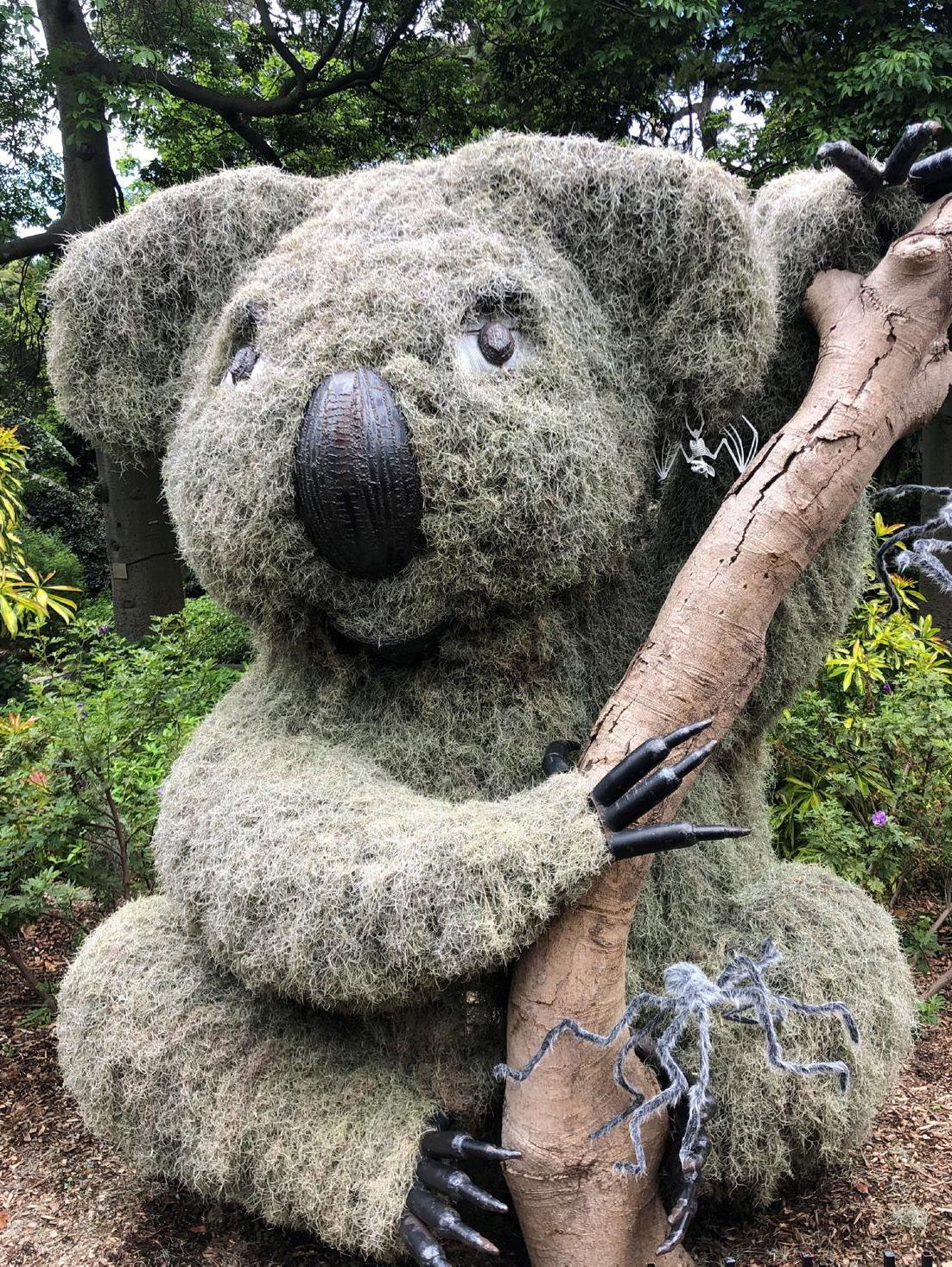
4 minute read
Rekindling Horticultural Connections
CRISIS HELPS REKINDLE HORTICULTURAL CONNECTIONS
IN THE MIDST OF A PANDEMIC, PEOPLE HAVE LOOKED FOR WAYS TO LIFT THEIR SPIRITS, AND FOR SOME THAT’S MEANT RENEWING THEIR RELATIONSHIPS WITH THE NATURAL WORLD. JOHN SIEMON REPORTS
Advertisement
It’s hard to fathom the contrast between the extreme droughts of 2019 and the bountiful rainfall of 2020, driven by a shift into La Niña weather patterns.
With global events dominating our lives recently, many might have missed just how green and verdant our three Botanic Gardens and the Domain have been. In fact, one might imagine that many Australians have been totally distracted from nature – interestingly that doesn’t seem to be the case.
The world’s fixation on the global pandemic has certainly exacerbated some behaviours – one of them, not surprisingly, being the consumption
The revamped meadow at the Royal Botanic Garden Sydney of alcohol (including, hopefully, our delicious new Botanic Gardens Grown Gin). But it has also resulted in some astonishing outcomes for the environment. While we all appreciate the enhanced air quality and the reduced traffic on our roads, as a horticultural scientist it has been particularly heartwarming for me to see society’s shift back to nature and horticulture.
The pandemic lockdown resulted in shelves being stripped of plant seeds, seedlings, indoor plants and potted specimens – a trend that the green life industry desperately needed, and I only wish they could have foreseen. Even our Growing Friends has had demand outstrip supply and it has taken many months, under tough and restrictive conditions, to rebuild stock levels.
After battling successive droughts and water restrictions, where many plant nursery’s failed to survive, the future for horticulture looks much brighter and botanic gardens everywhere will play a pivotal role resetting human behaviour and encouraging more people to continue to enjoy parks, gardens and nature experiences in the new ‘normal’.
Over the last year many agencies managing green spaces have recorded a significant uplift in visitation across the nation. Our organisation is no exception, with year-to-date visitor numbers up 21 per cent at the Australian Botanic Garden and 25 per cent at the Blue Mountains Botanic Garden. An anomaly to the trend is the Royal Botanic Garden Sydney where visitation is down almost 50% – a combination
The horticulture team remains committed to creating awe-inspiring botanic displays, such as The Calyx exhibition inBloom, the topiary koala (below right) at the Royal Botanic Garden Sydney and the spectacular topiary bee (below left) at the Australian Botanic Garden Mount Annan



of missing interstate and international tourism, cancelled events and office workers working from home.
Regardless of global events, each of our Gardens and the Domain remain a hive of activity – more so since the heavens opened, our turf has grown non-stop and dormant weed seeds have returned with a vengeance. Extensive turf renewal and renovations, combined with lower foot traffic, have resulted in some of the most spectacular lawns ever seen, especially throughout the normally heavytrafficked Domain. Our gardens continue to be carefully tendered by a remarkable and passionate team of more than 120 horticulture staff, ably supported by colleagues right across our organisation.
While our core mission remains focused on plant conservation, we are as committed as ever to creating engaging and awe-inspiring botanic displays – let’s face it, everyone has needed a boost in current times! Reinforcing this role is our latest Calyx exhibition, inBloom, which burst onto the scene in August, followed shortly thereafter by our supercharged rain-boosted spring displays, particularly the Spring Walk (Sydney), paper daisies (Mount Annan) and daffodils (Mount Tomah). More recently, the revamped meadow at the Royal Botanic Garden Sydney has literally burst into life buzzing with pollinators galore and blooms a plenty.
Those of you who ventured out to the Australian Botanic Garden Mount Annan last year would have also seen the rapid redevelopment of the Garden’s Nursery. It now boasts 7,000 square metres of new and dedicated production space (equivalent to almost six Olympic-size swimming pools), with the Foundation & Friends generously donating one of the new production shade houses.
This new infrastructure transforms the organisation’s capacity for producing rare and threatened flora. And it will be an instrumental component in the future development of the Australian Botanic Garden and the Australian Institute of Botanical Science when it launches this year. A further upgrade of the Nursery (Stage 2) is currently being documented to replace the Garden’s antiquated propagation greenhouses with stateof-the-art infrastructure to support our Horticulture and Science operations.
Capitalising on people’s growing connection with nature, we intend to increase our engagement with an ever-expanding audience, supporting the broader green life industry and making real inroads to threats to biodiversity.

The Australian Botanic Garden's new Nursery now boasts 7,000 square metres of new and dedicated production space
Spring daffodils at the Blue Mountains Botanic Garden
While we get on with the business of saving plants, our teams continue to finalise plans for our next spring and summer displays, a suite of garden renovation projects, our exciting new Herbarium landscape at Mount Annan, the trial garden in Sydney and the rebuilding of our collections at Mount Tomah, including an exciting Wollemi pine project.
And stay tuned for our next exciting Calyx exhibition, which will transport you to an underwater paradise. John Siemon is Director Horticulture, Australian Institute of Botanical Science, Botanic Gardens Greater Sydney











